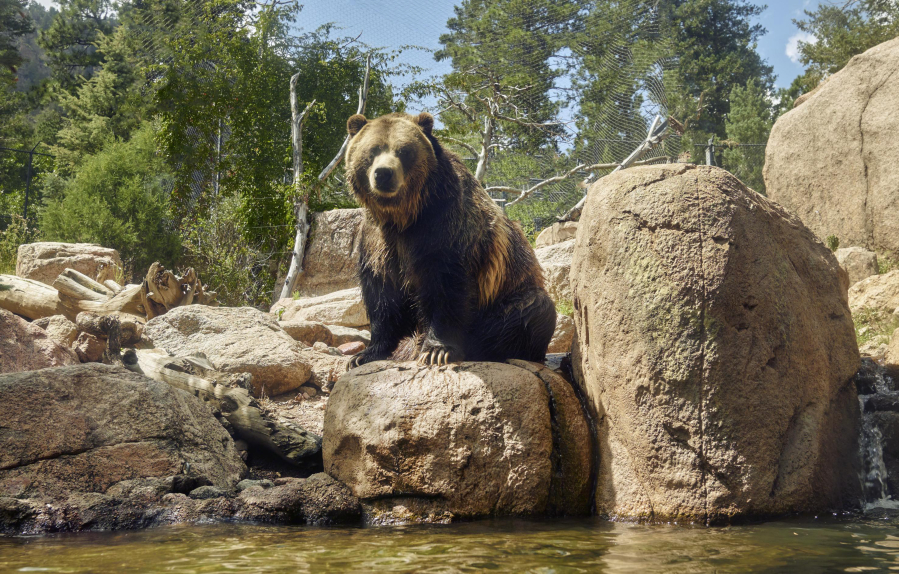OKANOGAN — The federal government’s plan to reintroduce grizzly bears into the North Cascades has received backlash from an Eastern Washington congressman.
U.S. Rep. Dan Newhouse, R-Yakima, in an opinion piece called the Biden administration’s plan to add the bears to an area without a grizzly sighting in more than a quarter-century “reckless” and described public comment efforts as a “façade.”
“Over the years, the people of Central Washington have voiced their concerns and opposed this action … emphasizing its potential harm to our families, wildlife and livestock,” Newhouse wrote.
He noted that in 2019, more than 600 North Central Washington residents participated in a public comment session to speak in opposition to grizzly bear introduction.
The plan itself is to reintroduce three to seven captured grizzly bears into the North Cascades yearly over a five- to 10-year period. The goal would be to establish an initial founding population of 25 grizzly bears and eventually result in approximately 200 grizzly bears within 60 to 100 years. This is only one of three possibilities drafted in the plan — no action, restoration and restoration under the 10(j) rule.
The lead agencies handling the grizzly bear restoration plan and environmental impact statement are the U.S. Department of the Interior, U.S. Fish & Wildlife Service and National Park Service.
The 10(j) rule would allow for “greater wildlife management flexibility in the event of human-bear conflicts” like allowing permits to be issued to private landowners to hazer or kill bears attacking livestock on private lands if it’s not possible to capture or deter them via other means, according to the drafted plan.
Newhouse proposed legislation on Oct. 11 to have the draft grizzly bear restoration plan and other related materials withdrawn, citing that state law already has declared grizzly bear reintroduction illegal.
He also cited the numerous public comments the National Park Service and Fish & Wildlife received back in 2019 when a similar plan was made available to the public.
Newhouse plans to hold a press conference Monday following a public comment and informational session in Okanogan hosted by Fish & Wildlife and the National Park Service.
Public comments can be submitted through Nov. 13. Find a copy of the plan and where to submit public comments virtually here. To comment on the (10)j rule designation, go here.
Other public comment and information sessions are being held in Darrington, Washington on Nov. 2 and in Winthrop on Nov. 3. All remaining public meetings are in-person only. Find more information here.
But why reintroduce grizzly bears?
The North Cascades Recovery Zone — the area where the grizzly bears would relocated — encompasses approximately 9,777 square miles of land in the state, which includes the Okanogan-Wenatchee National Forest all the way north to the Canadian border. Another 3,745 square miles of the zone is in Canada.
The population of grizzly bears in the North Cascades has been decimated through “direct killing,” with the last U.S. sighting in 1996, according to Fish & Wildlife and the National Park Service.
The last confirmed grizzly bear anywhere in the North Cascades was detected in British Columbia within the last 10 years, according to the draft plan.
The Fish & Wildlife Service defines grizzly bear population as “evidence of (two) adult females with cubs or 1 adult female tracked through two litters.” Any grizzly bears in the North Cascades would not meet the “accepted definition for a population.”
So, the first reason for grizzly bear reintroduction is to restore the grizzly bear population where they once were. According to the plan, this would contribute to the “restoration of biodiversity of the ecosystem to build ecological resilience.”
Grizzly bears in the North Cascades would impact fish and wildlife habitats through seed dispersal and by controlling prey populations, for example.
Fish & Wildlife wrote that reintroduction would also go toward removing the grizzly bear from the Federal List of Endangered and Threatened Wildlife where it’s listed as a threatened species in 48 states.
The restoration of the grizzly bear population is also for the “benefit and enjoyment of present and future generations of people” and would allow residents and visitors “the opportunity to again experience grizzly bears in their native habitat.”
The plan acknowledged that grizzly bear restoration does pose certain “safety risks to backcountry recreational visitors and residents of the (North Cascades).”
Grizzly bear restoration under the (10)j rule, which allows for more flexibility in handling the grizzly bears, would “reduce the potential for human-bear conflicts,” according to the plan.



